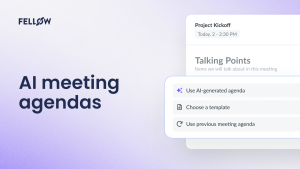Introduction
Taking meeting notes is a crucial task to ensure that discussions, decisions, and action items are documented for future reference. However, note-takers often face challenges such as unclear speech or rapid discussions, which can hinder the quality and accuracy of their notes. In this article, we will explore strategies for meeting note-takers to overcome these obstacles effectively.
Clear Speech
Active Listening
Meeting note-takers should actively listen to speakers and focus on understanding their points before jotting down notes. This ensures that even if speech is unclear, they can ask for clarification or paraphrase to grasp the message accurately.
Use of Technology
Utilize speech recognition software or transcription tools to capture spoken words accurately. These tools can transcribe speech in real-time, helping note-takers to keep up with rapid discussions and decipher unclear speech more easily.
Rapid Discussions
Abbreviations and Symbols
Develop a set of abbreviations and symbols to condense notes quickly during fast-paced discussions. For example, "acq" for acquisition, "proj" for project, or arrows to indicate relationships between ideas.
Structured Note-Taking
Organize notes using a structured format such as bullet points, numbered lists, or mind maps. This helps note-takers to capture key points efficiently and maintain clarity even in fast-moving conversations.

Conclusion
Meeting note-taking is a skill that requires adaptability and quick thinking, especially when faced with challenges like unclear speech or rapid discussions. By employing active listening techniques, leveraging technology, and implementing structured note-taking strategies, note-takers can navigate these obstacles effectively and ensure the accuracy and completeness of their meeting records.
For more tips and tools to enhance meeting productivity, consider using Meeting note taker, a comprehensive platform designed to streamline note-taking processes and improve collaboration.